Muss Haq, Author of The Year of AI and Customer Centricity, warns of AI’s potential pitfalls in customer experience. Learn the red flags businesses must avoid to build trust and long-term loyalty.
AI is everywhere in customer experience right now—but so are the red flags. From chatbot loops that frustrate more than they help to data-driven decisions that miss the human point entirely, businesses are walking a fine line between innovation and alienation. While the promise of efficiency is tempting, using AI as a shortcut can quietly erode trust, loyalty, and emotional connection. Without a relational mindset, even the smartest AI feels robotic and disconnected.
When businesses treat CX as a series of isolated interactions instead of an emotional, end-to-end journey, they severely limit AI’s value. The technology shines when applied across the full customer lifecycle—helping to anticipate needs, deepen relationships, and build long-term loyalty.
 In this conversation, Muss Haq, Head of Customer Experience and Insight at RU CX and author of The Year of AI and Customer Centricity, dismantles some of the most common myths about AI in CX—starting with the idea that it can (or should) replace human connection. He challenges the transactional mindset that restricts AI’s potential to drive meaningful, emotionally resonant experiences.
In this conversation, Muss Haq, Head of Customer Experience and Insight at RU CX and author of The Year of AI and Customer Centricity, dismantles some of the most common myths about AI in CX—starting with the idea that it can (or should) replace human connection. He challenges the transactional mindset that restricts AI’s potential to drive meaningful, emotionally resonant experiences.
Muss also flags the warning signs of AI misuse—like prioritising cost-cutting over customer care, automating complex moments without empathy, and failing to engage employees in the AI journey. He underscores that in high-trust industries like healthcare and finance, human connection isn’t optional—it’s everything.
Full interview:
What are the biggest misconceptions companies have about using AI in customer experience?
One of the biggest misconceptions about companies’ use of AI in customer experience is that AI can replace human connection. Many businesses mistakenly believe that AI is the answer to reducing costs by replacing employees. They focus on automation and AI to improve efficiency, at the expense of customer engagement and building trust.
Another misconception is that implementing AI tools like chatbots and recommendation engines will automatically enhance experiences, which is far from the truth. Also, while companies may collect vast amounts of customer data using AI, they often fail to utilise it meaningfully to improve employee and customer experiences.
The emphasis needs to be on AI enhancing human connection rather than replacing it, and its role is to empower employees to perform their jobs better and more efficiently.
Furthermore, AI alone cannot save a business lacking a customer-centric culture and mindset, understanding employee and customer expectations, empathy, and strategic intent.
ALSO READ: CX Strategy is Only as Good as Your Willingness to Change
Many businesses still treat CX as transactional rather than relational. How does this limit AI’s potential impact?
When businesses treat customer experience as transactional rather than building long-term advocacy, they significantly limit AI’s potential and impact. AI is best used when it is used across the entire customer journey end-to-end. Understanding the nuances of human emotion and the context of ongoing relationships is when an organisation can really make a positive impact.
Transactional focuses on individual interactions without building deeper connections or considering the customer’s long-term journey. In such a model, AI might automate simple tasks or personalise based on immediate purchase history. Still, it misses the opportunity to leverage data and insights to anticipate needs, build emotional loyalty, and create significant experiences.
CX is beyond transactions; it’s about the deeper emotional and relational connections businesses establish with their customers. AI’s ability to analyse sentiment, predict future behaviour, and personalise at a deep level is underutilised when the fundamental approach to CX is purely transactional and lacks a focus on building enduring relationships. Without a relational focus, AI risks feeling robotic and impersonal, undermining the human connection that drives loyalty.
What are some red flags that indicate a company is using AI as a shortcut rather than a true enabler of customer-centricity?
Several red flags indicate a company might be using AI as a shortcut rather than a true enabler of customer-centricity:
◦ Primarily focusing on cost reduction through AI implementation instead of enhancing customer experiences.
◦ Replacing human touchpoints with AI without ensuring a seamless or empathetic alternative for complex issues is a key indicator. Customers getting stuck in endless chatbot loops is a key indicator.
◦ Lack of transparency with customers about how AI is used and how their data is handled leads to a trust deficit.
◦ Failing to measure AI’s impact beyond basic financials, neglecting CX-focused metrics like customer retention, NPS, and customer effort.
◦ Ignoring employee resistance to AI adoption and failing to train and empower them to work effectively with AI tools. If employees are disengaged and do not see AI as an enabler, its potential to improve CX will be limited.
◦ Treating AI as a standalone solution rather than integrating it into a holistic customer-centric strategy that includes leadership, culture, and employee engagement.
Are there industries or scenarios where AI should have a minimal role in CX to maintain customer trust?
Yes, there are industries or scenarios where AI should have a minimal role in CX to maintain customer trust and the essential human element. In situations requiring high levels of empathy, complex problem-solving, or significant emotional engagement, minimising AI and prioritising human interaction is crucial.
For example, a human touch in healthcare is paramount for building trust and providing comfort, especially when dealing with sensitive patient issues or delivering bad news.
Similarly, in financial services, when customers make critical life decisions involving their finances, they often require a human advisor’s reassurance and nuanced understanding.
Industries where personal relationships and trust are fundamental, such as hospitality and travel, can operationally use AI for better experiences; however, human engagement is essential to creating a memorable experience. Additionally, other businesses, such as high-end luxury goods or personalised consulting services, should also exercise caution in over-relying on AI for customer interactions.
Even as AI advances, the objective measure of business success is how you make your customers feel, suggesting that human interaction should take precedence in emotionally sensitive or high-stakes scenarios.
What role does employee empowerment play in ensuring AI is used effectively in customer interactions?
Employee empowerment is crucial in ensuring AI is used effectively in customer interactions because AI is merely a tool, and the employees wield it to deliver exceptional experiences.
Only when employees are well-trained in emotional intelligence, working together as one across all teams and AI tools can these tools enhance their ability to serve customers. They are more likely to use them effectively and ethically.
Empowered employees can also make judgment calls on when to rely on AI and when human intervention is necessary, ensuring that the customer’s needs are always prioritised.
This highlights that AI should be regarded as an enhancer rather than a replacement and should be embedded to empower teams to deliver exceptional customer experiences seamlessly.
Furthermore, companies that engage employees in the AI adoption are significantly more likely to succeed. By fostering a culture where employees feel a sense of ownership and are equipped with the right skills and autonomy, businesses can ensure that AI is a true enabler of customer-centricity, enhancing human interactions rather than detracting from them.
ALSO READ: Smarter Service Begins with Generative and Agentic AI
Tell us about your book.
“RU-CX: The Year of AI and Customer Centricity” is a deeply personal and practical guide to help businesses build customer relationships in an AI-driven world.
I wrote The Year of AI & Customer Centricity because, as I truly believe, we’re at a turning point—a moment when technology is evolving faster than many organisations can keep up with, yet the one thing that remains constant is our human need for connection.
This book isn’t just about CX or AI—it’s about ensuring that as businesses evolve, we don’t lose sight of what really matters: people. Whether it’s a customer reaching out for help or an employee trying to make a difference, the heart of every successful organisation lies in how well it connects with its people.
My journey—from growing up watching my father connect deeply with people without ever reading a single manual, to working in data, CX, and behavioural science—inspired me to write something real and actionable.
Over the last three years, I have presented at Events and Summits on the importance of integrating all elements of Leadership, Culture, Customer and Employee Experience, Behavioural and emotional Science, and data enhancement for continuous Improvement. I felt this topic wasn’t given justice in a 45-minute presentation.
Hence, bring it all together in a comprehensive and practical way that balances technology with a People-led approach. This book is my way of reminding leaders that the future isn’t just digital—it’s deeply human.
Drawing on nearly 30 years of customer experience, this inspiring book offers a holistic, human-centred approach to leveraging AI for customer-centric innovation.
It is designed for professionals who believe business success stems from meaningful, personal connections. These individuals are eager to blend cutting-edge technology with the timeless art of empathy and building long-term customer relationships.
The book provides practical strategies, engaging case studies, and reflective exercises, motivating organisations to future-proof themselves in the age of AI and customer centricity.
It introduces the RU-CX Holistic Framework, a six-stage approach that aligns leadership, culture, data, and technology for exceptional customer experience (CX).
The central theme is that technology should amplify humanity, not replace it. Emphasising the importance of ethical AI and data use aims to build trust and foster sustainable growth.
Ultimately, this toolkit and roadmap guide businesses towards creating experiences that win customers and hearts, transforming both the organisation and customers’ lives through the unity of AI and empathy.
ALSO READ: How Programmatic Advertising Impacts CX – And How to Improve It









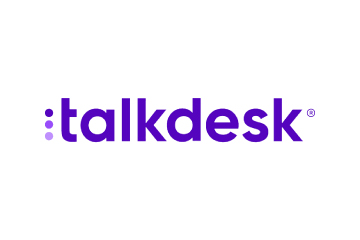









 Amplitude is a product analytics platform, enabling businesses to track visitors with the help of collaborative analytics. The platform leverages the capabilities of
Amplitude is a product analytics platform, enabling businesses to track visitors with the help of collaborative analytics. The platform leverages the capabilities of 




 Zoho Social, a part of Zoho’s suite of 50+ products, is a comprehensive social media management platform for businesses and agencies. The Zoho Social dashboard includes a robust set of features, such as Publishing Calendar, Bulk Scheduler, and Approval Management to offer businesses all the essential social media publishing tools. Its monitoring tools help enterprises track and respond to relevant social conversations.
Zoho Social, a part of Zoho’s suite of 50+ products, is a comprehensive social media management platform for businesses and agencies. The Zoho Social dashboard includes a robust set of features, such as Publishing Calendar, Bulk Scheduler, and Approval Management to offer businesses all the essential social media publishing tools. Its monitoring tools help enterprises track and respond to relevant social conversations.

 Microsoft Dynamics 365 represents a robust cloud-based CRM solution with features such as pipeline assessment, relationship analytics, and conversational intelligence. It utilises AI-powered insights to provide actionable intelligence via predictive analytics, lead scoring, sentiment analysis, etc. Currently, Microsoft operates in 190 countries and is made up of more than 220,000 employees worldwide.
Microsoft Dynamics 365 represents a robust cloud-based CRM solution with features such as pipeline assessment, relationship analytics, and conversational intelligence. It utilises AI-powered insights to provide actionable intelligence via predictive analytics, lead scoring, sentiment analysis, etc. Currently, Microsoft operates in 190 countries and is made up of more than 220,000 employees worldwide.

 HubSpot is an inbound marketing, sales, and customer service software provider, offering robust CRM and automation solutions. Some of its products include Marketing Hub, Sales Hub, Operations Hub, Content Hub, Commerce Hub, Marketing Analytics and Dashboard Software. Guided by its inbound methodology, HubSpot enables companies to prioritise innovation and customer success.
HubSpot is an inbound marketing, sales, and customer service software provider, offering robust CRM and automation solutions. Some of its products include Marketing Hub, Sales Hub, Operations Hub, Content Hub, Commerce Hub, Marketing Analytics and Dashboard Software. Guided by its inbound methodology, HubSpot enables companies to prioritise innovation and customer success.
 Monday.com is a project management software company, offering a cloud-based platform that enables businesses
Monday.com is a project management software company, offering a cloud-based platform that enables businesses  Headquartered in San Mateo, California, Freshworks is a global AI-powered business software provider. Its tech stack includes a scalable and comprehensive suite for IT, customer support, sales, and marketing teams, ensuring value for immediate business impact. Its product portfolio includes Customer Service Suite, Freshdesk, Freshchat, Freshcaller, Freshsuccess, and Freshservice. Freshservice for Business Teams has helped several global organisations to enhance their operational efficiency.
Headquartered in San Mateo, California, Freshworks is a global AI-powered business software provider. Its tech stack includes a scalable and comprehensive suite for IT, customer support, sales, and marketing teams, ensuring value for immediate business impact. Its product portfolio includes Customer Service Suite, Freshdesk, Freshchat, Freshcaller, Freshsuccess, and Freshservice. Freshservice for Business Teams has helped several global organisations to enhance their operational efficiency.
 Talkdesk offers an innovative AI-powered customer-centric tech stack to its global partners. The company provides generative AI integrations, delivering industry-specific solutions to its customers. Talkdesk CX Cloud and Industry Experience Clouds utilise modern machine learning and language models to enhance contact centre efficiency and client satisfaction.
Talkdesk offers an innovative AI-powered customer-centric tech stack to its global partners. The company provides generative AI integrations, delivering industry-specific solutions to its customers. Talkdesk CX Cloud and Industry Experience Clouds utilise modern machine learning and language models to enhance contact centre efficiency and client satisfaction.




 The company offers comprehensive cloud-based solutions, such as Microsoft Dynamics 365, Gaming Consoles, Microsoft Advertising, Copilot, among other things, to help organisations offer enhanced CX and ROI. Its generative-AI-powered speech and voice recognition solutions,such as Cortana and Azure Speech Services empowers developers to build intelligent applications.
The company offers comprehensive cloud-based solutions, such as Microsoft Dynamics 365, Gaming Consoles, Microsoft Advertising, Copilot, among other things, to help organisations offer enhanced CX and ROI. Its generative-AI-powered speech and voice recognition solutions,such as Cortana and Azure Speech Services empowers developers to build intelligent applications. IBM is a global hybrid cloud and AI-powered
IBM is a global hybrid cloud and AI-powered  Uniphore is an enterprise-class, AI-native company that was incubated in 2008. Its enterprise-class multimodal AI and data platform unifies all elements of voice, video, text and data by leveraging Generative AI, Knowledge AI, Emotion AI and workflow automation. Some of its products include U-Self Serve, U-Assist, U-Capture, and U-Analyze. Its Q for Sale is a conversational intelligence software that guides revenue teams with AI-powered insights, offering clarity on how to effectively keep prospects engaged.
Uniphore is an enterprise-class, AI-native company that was incubated in 2008. Its enterprise-class multimodal AI and data platform unifies all elements of voice, video, text and data by leveraging Generative AI, Knowledge AI, Emotion AI and workflow automation. Some of its products include U-Self Serve, U-Assist, U-Capture, and U-Analyze. Its Q for Sale is a conversational intelligence software that guides revenue teams with AI-powered insights, offering clarity on how to effectively keep prospects engaged. Google Cloud accelerates every organisation’s ability to digitally transform its business. Its enterprise-grade solutions leverage modern technology to solve the most criticial business problems
Google Cloud accelerates every organisation’s ability to digitally transform its business. Its enterprise-grade solutions leverage modern technology to solve the most criticial business problems  8×8 offers out-of-the-box contact centre solutions, assisting all-size businesses to efficiently meet customer needs and preferences. It offers custom CRM integrations support and integrates effortlessly with third-party CRMs like Salesforce, Microsoft Dynamics, Zendesk, and more. Offering global support in all time zones & development teams in 5 continents, its patented geo-routing solution ensures consistent voice quality.
8×8 offers out-of-the-box contact centre solutions, assisting all-size businesses to efficiently meet customer needs and preferences. It offers custom CRM integrations support and integrates effortlessly with third-party CRMs like Salesforce, Microsoft Dynamics, Zendesk, and more. Offering global support in all time zones & development teams in 5 continents, its patented geo-routing solution ensures consistent voice quality. Sprinklr is a comprehensive enterprise software company for all customer-focused functions. With advanced AI, Sprinklr’s unified customer experience management (Unified-CXM) platform lets organisations offer human experiences to every customer, every time, across any modern channel.
Sprinklr is a comprehensive enterprise software company for all customer-focused functions. With advanced AI, Sprinklr’s unified customer experience management (Unified-CXM) platform lets organisations offer human experiences to every customer, every time, across any modern channel.


 Upland offers a comprehensive suite of contact centre and customer service solutions with products including InGenius, Panviva, Rant & Rave, and RightAnswers. InGenius enables organisations to connect their existing phone system with CRM, further enhancing agent productivity. Panviva provides compliant and omnichannel capabilities for highly regulated industries. Whereas, Rant & Rave, and RightAnswers are its AI-powered solutions,
Upland offers a comprehensive suite of contact centre and customer service solutions with products including InGenius, Panviva, Rant & Rave, and RightAnswers. InGenius enables organisations to connect their existing phone system with CRM, further enhancing agent productivity. Panviva provides compliant and omnichannel capabilities for highly regulated industries. Whereas, Rant & Rave, and RightAnswers are its AI-powered solutions, 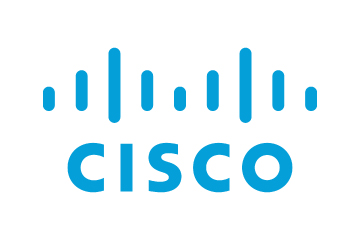


 Hootsuite, headquartered in Vancouver, is a social media management platform that streamlines the process of managing multiple social media accounts. Some of its core offerings include social media content planning and publishing, audience engagement tools, analytics and social advertising. Its easy-to-integrate capabilities help marketing teams to schedule and publish social media posts efficiently.
Hootsuite, headquartered in Vancouver, is a social media management platform that streamlines the process of managing multiple social media accounts. Some of its core offerings include social media content planning and publishing, audience engagement tools, analytics and social advertising. Its easy-to-integrate capabilities help marketing teams to schedule and publish social media posts efficiently.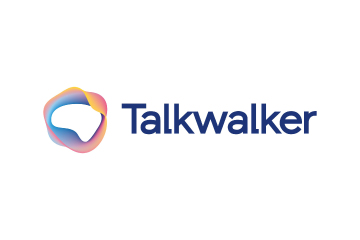
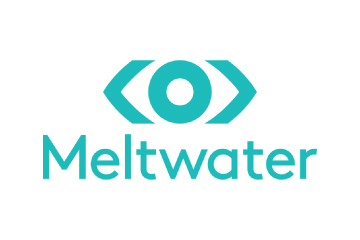
 Brandwatch enables businesses to build and scale the optimal strategy for their clients with intuitive, use-case-focused tools that are easy and quick to master. Bringing together consumer intelligence and social media management, the company helps its users react to the trends that matter, collaborate on data-driven content, shield the brand from threats and manage all the social media channels at scale.
Brandwatch enables businesses to build and scale the optimal strategy for their clients with intuitive, use-case-focused tools that are easy and quick to master. Bringing together consumer intelligence and social media management, the company helps its users react to the trends that matter, collaborate on data-driven content, shield the brand from threats and manage all the social media channels at scale.

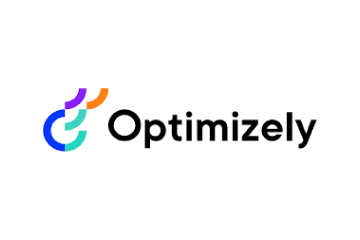
 Adobe Experience Cloud offers a comprehensive set of applications, capabilities, and services specifically designed to address day-to-day requirement for personalised customer experiences at scale. Its platform helps play an essential role in managing different digital content or assets to improve customer happiness. Its easy-to-optimise content gives users appropriate marketing streams, ensuring product awareness.
Adobe Experience Cloud offers a comprehensive set of applications, capabilities, and services specifically designed to address day-to-day requirement for personalised customer experiences at scale. Its platform helps play an essential role in managing different digital content or assets to improve customer happiness. Its easy-to-optimise content gives users appropriate marketing streams, ensuring product awareness. Salesforce-owned Tableau is an AI-powered analytics and business intelligence platform, offering the breadth and depth of capabilities that serve the requirements of global enterprises in a seamless, integrated experience. Marketers can utilise generative AI models, AI-powered predictions, natural language querying, and recommendationsons.
Salesforce-owned Tableau is an AI-powered analytics and business intelligence platform, offering the breadth and depth of capabilities that serve the requirements of global enterprises in a seamless, integrated experience. Marketers can utilise generative AI models, AI-powered predictions, natural language querying, and recommendationsons. Contentsquare is a cloud-based digital experience analytics platform, helping brands track billions of digital interactions, and turn those digital
Contentsquare is a cloud-based digital experience analytics platform, helping brands track billions of digital interactions, and turn those digital 


 Zoho Corporation offers innovative and tailored software to help leaders grow their business. Zoho’s 55+ products aid sales and marketing, support and collaboration, finance, and recruitment requirements. Its customer analytics capabilities come with a conversational feature, Ask Zia. It enables users to ask questions and get insights in the form of reports and widgets in real-time.
Zoho Corporation offers innovative and tailored software to help leaders grow their business. Zoho’s 55+ products aid sales and marketing, support and collaboration, finance, and recruitment requirements. Its customer analytics capabilities come with a conversational feature, Ask Zia. It enables users to ask questions and get insights in the form of reports and widgets in real-time. Fullstory is a behavioural data platform, helping C-suite leaders make informed decisions by injecting digital behavioural data into its analytics stack. Its patented technology uncovers the power of quality behavioural data at scale, transforming every digital visit into actionable insights. Enterprises can increase funnel conversion and identify their highest-value customers effortlessly.
Fullstory is a behavioural data platform, helping C-suite leaders make informed decisions by injecting digital behavioural data into its analytics stack. Its patented technology uncovers the power of quality behavioural data at scale, transforming every digital visit into actionable insights. Enterprises can increase funnel conversion and identify their highest-value customers effortlessly.
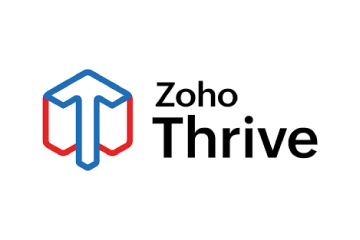
 Started in 2005 in a Sweden-based small town, Norrköping, Voyado offers a customer experience cloud platform that includes a customer loyalty management system. This platform helps businesses design and implement customer loyalty programs, track customer
Started in 2005 in a Sweden-based small town, Norrköping, Voyado offers a customer experience cloud platform that includes a customer loyalty management system. This platform helps businesses design and implement customer loyalty programs, track customer 



 TapMango provides a comprehensive, customisable, flexible and feature-rich customer loyalty program. The loyalty tools include an integrated suite of customised consumer-facing technology, easy-to-use merchant tools, and automation algorithms, all aimed at enhancing customer experience. Adaptable to any industry, TapMango’s platform helps merchants compete with larger chains, converting customer one-time purchases into profitable spending habits.
TapMango provides a comprehensive, customisable, flexible and feature-rich customer loyalty program. The loyalty tools include an integrated suite of customised consumer-facing technology, easy-to-use merchant tools, and automation algorithms, all aimed at enhancing customer experience. Adaptable to any industry, TapMango’s platform helps merchants compete with larger chains, converting customer one-time purchases into profitable spending habits.






 Adobe Experience Cloud offers a comprehensive set of applications, capabilities, and services specifically designed to address day-to-day requirements for personalised customer experiences at scale. Its innovative platform has played an essential role in managing different digital content or assets, to improve customer happiness or satisfaction. Some of its products include Adobe Gen Studio, Experience Manager Sites, Real-time CDP, and Marketo Engage.
Adobe Experience Cloud offers a comprehensive set of applications, capabilities, and services specifically designed to address day-to-day requirements for personalised customer experiences at scale. Its innovative platform has played an essential role in managing different digital content or assets, to improve customer happiness or satisfaction. Some of its products include Adobe Gen Studio, Experience Manager Sites, Real-time CDP, and Marketo Engage.

